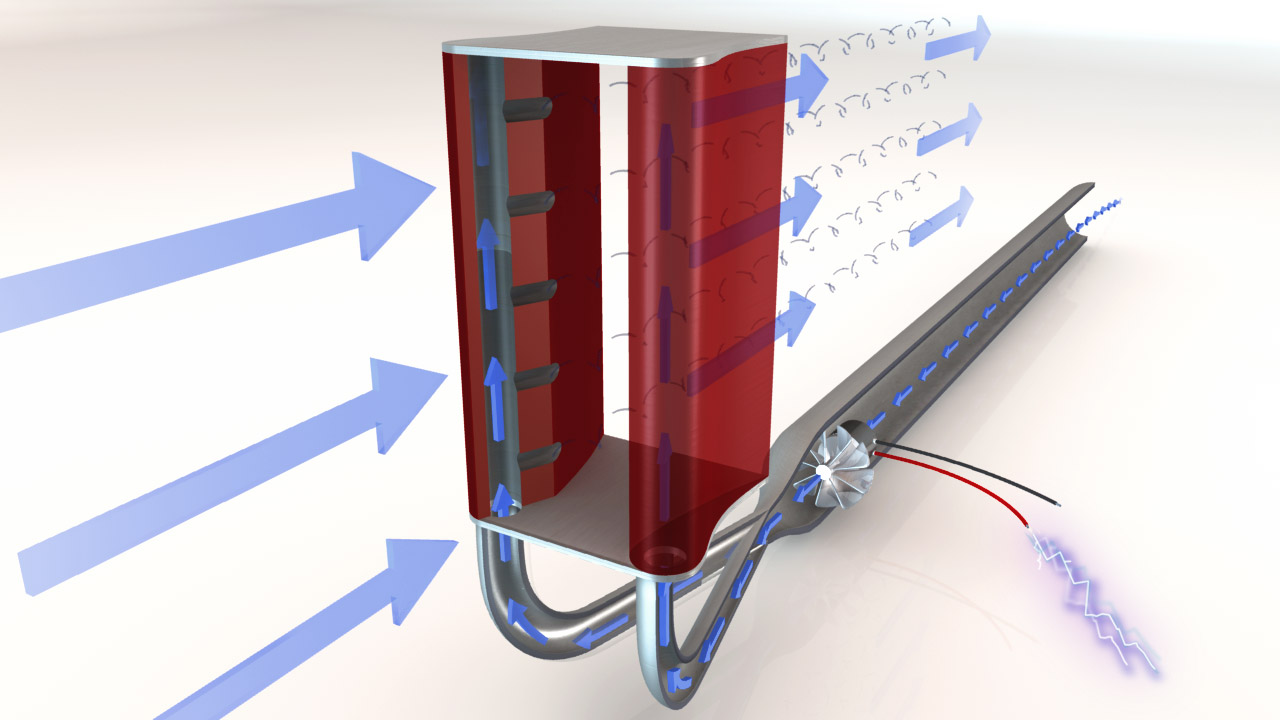ALBUQUERQUE, N.M. — In an effort to help researchers think about their ideas from a business perspective, Sandia National Laboratories collaborated with startup accelerator ABQid in the labs’ first Pitch Competition this fall.
A team working to commercialize wind energy for retailers and data centers took first place among six Sandia teams at the competition and will head to a National Lab Accelerator Pitch Event on Nov. 29.
The national competition in the San Francisco area will include teams from 11 national laboratories vying for up to $50,000 to continue their work. The Department of Energy’s Office of Energy Efficiency and Renewable Energy will give the winning team $25,000, and the winning lab is expected to match that contribution.

The Pitch Competition enabled scientists to network with local entrepreneurs, judges and colleagues, then present their ideas in front of several dozen audience members. Each team chose one member to explain their research in five minutes, followed by an additional five minutes of questions from judges about costs, money savings, licensing plans, business models and industry competition.
Researchers were coached ahead of time how to clearly and concisely explain their research. For some, this was their first time presenting their ideas in front of a crowd. The panel of judges was comprised of local entrepreneurs and representatives from ABQid, engineering and manufacturing company Team Technologies, and CNM Ingenuity, a nonprofit that helps Central New Mexico Community College pursue endeavors in technology and entrepreneurship.
After presenters explained a wide range of ideas involving heat exchangers, better fuel efficiency, new software, an app tracking system, and reducing drag on cars and flying vehicles, the winner was the team working on distributed wind energy. Teams had the opportunity to not only take home the top prize, but also three other awards for “Most Sandian,” “Most Engaging” and “Crowd Favorite,” which was decided by votes from the audience. The mood in the room was encouraging, both from a crowd that laughed and clapped at the right times, and judges who poked and prodded without being harsh.
Jackie Kerby Moore, Sandia’s manager of Technology and Economic Development, said the goal of the competition was to help teams form relationships with members of the business community and identify an innovation to showcase Sandia on a national level. It also supported Sandia’s technology transfer mission and the labs’ Entrepreneur Exploration program.
“We want to invigorate the entrepreneur culture at Sandia, inspire our entrepreneurs and increase the number of Sandia entrepreneurs leaving the labs to start up or expand companies,” said Kerby Moore. After the competition, she said she was proud of all participants and excited that the winner is directly tied with Sandia’s energy technologies.
ABQid executive director T.J. Cook said, “What we do as a start-up accelerator is we identify and develop — that’s the “i” and the “d” in ABQid — early stage businesses with high growth potential and invest the resources, the time and the connectivity they need to succeed. So this collaboration with Sandia Labs is really inspiring and rewarding and frankly an honor to be a part of.”
Wind energy experts from Sandia advance to national competition
Brent Houchens, a mechanical engineer in Sandia’s thermal fluids science and engineering group, said his team’s distributed wind energy solution is Aero-MINEs, for Motionless, INtegrated, Energy, “wind energy harvesters that have no external moving parts, are safe, reliable, quiet and totally scalable.”
Winning the national competition would enable Houchens’ team to manufacture a prototype stand for a model they could test in a wind tunnel. If they are able to optimize their design, Houchens and Sandia team members Myra Blaylock, David Maniaci and Dave Marian hope to license their technology for production.
The first full-size version of Aero-MINEs would be about 10 feet tall and 3 feet wide, and then other sizes would be available. Holding up a small model that looks like two walls, or airfoils, with holes running from top to bottom, Houchens explained how using Aero-MINEs, power generation is isolated internally by the transmission of air, then amplified by outlet jet nozzles.
“We’ve done initial computational fluid dynamic simulations to show that we can generate a significant pressure decrease to draw the suction that we need to drive the generator,” Houchens said.
In addition, Houchens said the team also is pursuing battery storage partners and a potential early adopter. Some top retailers including Amazon.com, Walmart and Facebook have committed to using more renewable energy so right now, the market is looking good, Houchens said. For businesses that have already adopted solar, the Aero-MINEs can be an addition.
“We can integrate because we only need the front edge of their building,” Houchens said, “so we can provide a complementary solution that works at night and when it’s cloudy.”
Houchens said the team’s goal is to commercialize in the next two years, and then move to profitability with early adopters and large customers. Then they will address markets including midsize companies, apartments and homeowners.